
Maerten de Vos, Maerten de Vos the Elder or Marten de Vos was a Flemish painter. He is known mainly for his history and allegorical paintings and portraits. He was, together with the brothers Ambrosius Francken I and Frans Francken I, one of the leading history painters in the Spanish Netherlands after Frans Floris career slumped in the second half of the sixteenth century as a result of the Iconoclastic fury of the Beeldenstorm.

Pieter van Lint or Peter van Lint (1609–1690) was a Flemish painter, draughtsman and designer of tapestries. He excelled in history paintings, genre scenes and portraits in the Flemish Baroque style with some Classisizing influence. He worked in Antwerp and Italy.
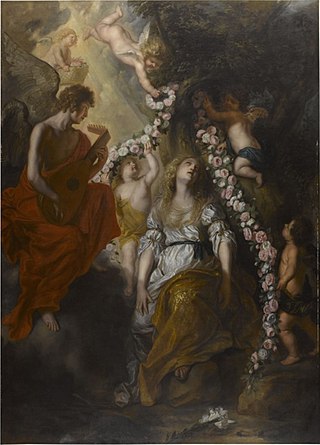
Theodoor Boeyermans, Theodor Boeyermans or Theodor Boeijermans was a Flemish painter active in Antwerp who painted Baroque history paintings and group portraits informed by the tradition of Peter Paul Rubens and Anthony van Dyck.

Gerard Seghers was a Flemish painter, art collector, and art dealer. After a period of study and residence in Italy, he returned to Flanders where he became one of the leading representatives of the Flemish Caravaggisti movement. In his later career he abandoned the Caravaggist style and genre motifs to become an important painter of large altarpieces for local churches.

Hendrik van Minderhout was a Dutch-born artist who was primarily active in the Flemish cities Bruges and Antwerp. He painted marine paintings, harbor scenes, cityscapes, landscapes and architectural paintings. He also collaborated as a staffage painter with Flemish landscape and perspective painters.

Ambrosius Brueghel was a Flemish painter from the famous Brueghel family of artists. Less prolific and less well-known than a number of his family members, his oeuvre is not very well understood and is believed to comprise Baroque still lifes, garland paintings as well as landscapes.

Willem van Herp (I) or Willem van Herp the Elder (variations on first name: 'Guilliam', 'Gilliam' and 'Guillaume') (c. 1614 in Antwerp – 1677) was a Flemish Baroque painter specializing in religious paintings and small cabinet paintings of "low-life" genre scenes. He operated a large workshop and through his good connections with Antwerp art dealers helped spread the Flemish Baroque style internationally.

Jan Pauwel Gillemans the Younger was a Flemish still life painter. He worked in a range of still life genres including flower and fruit still lifes, banquet still lifes, pronkstillevens and hunting pieces. He collaborated with figure painters to create landscapes which combined a mythological or allegorical scene with a still life. He worked and lived in Antwerp, Middelburg, London and Amsterdam.
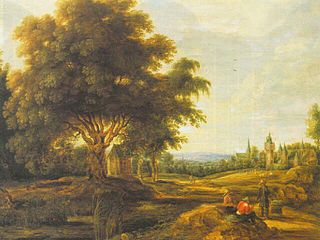
Jacques Backereel, was a Flemish Baroque landscape painter. After training in Antwerp he worked for some time in Rome. He is mainly known for large-scale landscape paintings.
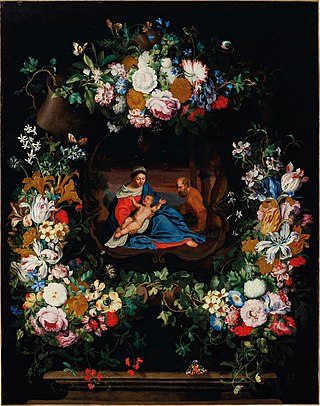
Jan Pieter Brueghel or Jan Peeter Brueghel was a Flemish painter who specialised in flower still lifes and garland paintings. A scion of the famous Brueghel family of painters, he trained in Antwerp with his father and later worked in Liège, Paris and Italy.

Willem Forchondt, or Guillam Forchondt the Elder (1608–1678) was a Flemish painter, cabinet maker and art dealer. He operated a successful painting workshop and a profitable dealership which extended throughout Europe through the satellite offices operated by his sons in Vienna, Lisbon and Cadiz. His international art dealership played an important role in the spread of Flemish Baroque art in Europe and South-America. He changed the relationship between art dealer and artist by becoming involved in the organisation of the art production process.

Erasmus de Bie (1629–1675) was a Flemish Baroque painter known for his city views and genre scenes. He depicted several lively scenes of large public celebrations in his hometown of Antwerp. It is not clear whether the views of Italianate cities and landscapes attributed to him are the work of Adriaen de Bie, a Flemish painter from Lier who worked in Italy for a while.
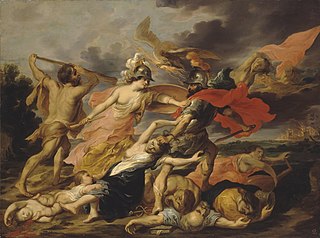
Victor Wolfvoet (II) or Victor Wolfvoet the Younger (1612 – 1652), was a Flemish art dealer and painter of history and allegorical paintings. His artistic output was heavily influenced by Peter Paul Rubens.
Jan Baptist Tijssens the Younger (1660–1723) was a Flemish painter mainly known for his 'guardroom scenes' and still lifes. He was also active as an art dealer.
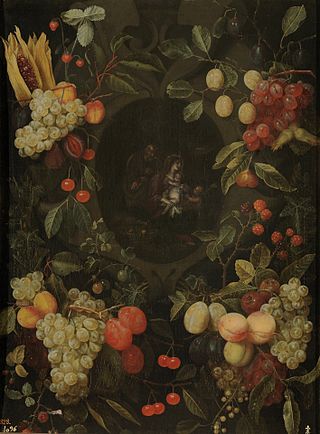
Cornelis van Huynen was a Flemish still life painter who is known for his fruit and garland paintings. He was active in Antwerp where he had trained with the prominent still life painter Joris van Son.
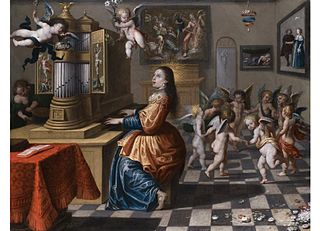
Gerard de la Vallée was a Flemish painter of landscapes and history paintings. His work was inspired by the great Flemish masters and mainly produced for the export market.

Jan Peeter van Bredael the Elder or Jan Pieter van Bredael the Elder was a Flemish painter, art restorer and art dealer. He is known for his still lifes of flowers and fruits, game and Italianate landscapes. He was a member of the prominent artistic family van Bredael from Antwerp.
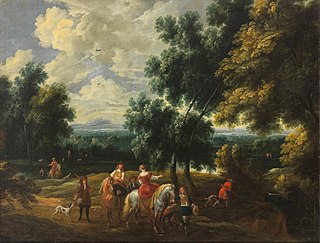
Alexander Casteels the Elder or Alexander Casteels (I) (c. 1635 – 1681–82) was a Flemish painter and draughtsman. He is known for his battle scenes and landscapes with hunters and elegant companies.

Pauwels Casteels or Pauwel Casteels was a Flemish painter and draughtsman. He worked in Antwerp and is known for his battle scenes and landscapes with mythological, historical and biblical scenes.

Franciscus Hamers or Frans Hamers was a Flemish painter and draughtsman. He is known for his Italianate landscapes with hunters. Due to their closeness to the work of the Flemish painter Simon Johannes van Douw, his work was initially attributed to an anonymous artist who was given the notname Pseudo-Van Douw.



















